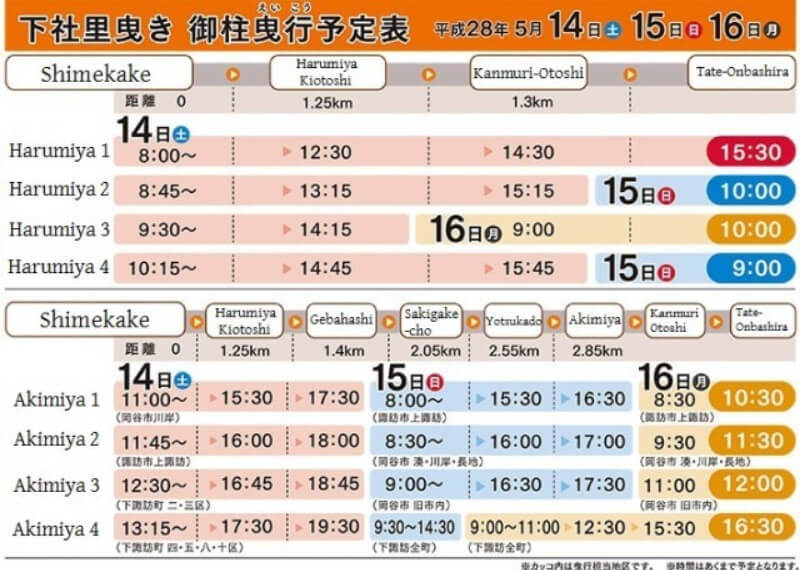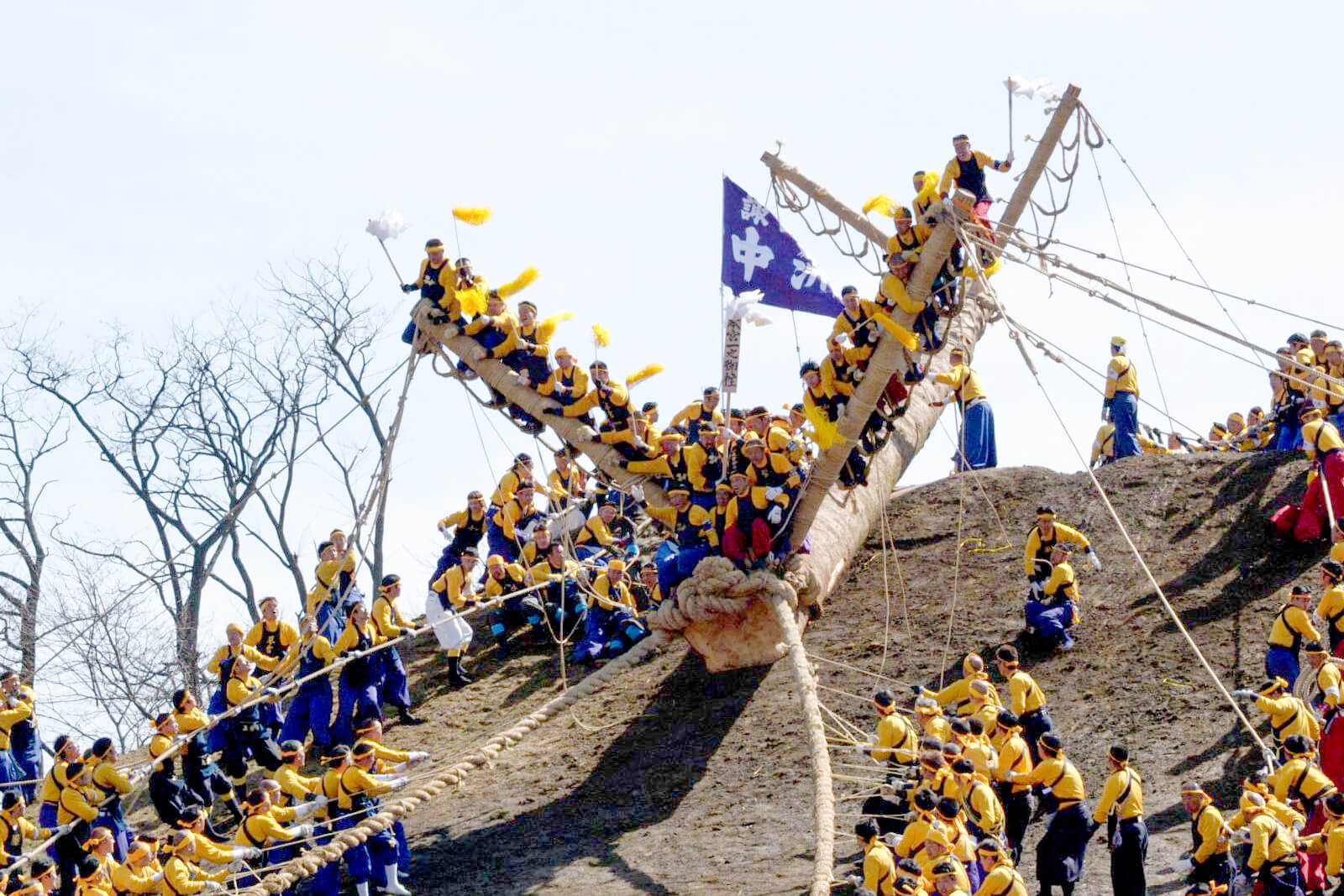
Once every seven years, the Suwa area (in central Nagano) holds the Onbashira festival. In this festival, thousands of locals participate in moving 16 massive fir tree trunks from the surrounding mountains to the shrines of Suwa. These fir trees are usually 17 to 19 meters long, 1 meter wide and weigh around 7.5 tons each. These trees become the new great pillars, or Onbashira, in the corners of each Suwa shrine.
Over the span of the festival, upwards of 3,000 people will participate in pulling each tree from the mountain to its destination. They must cross rivers, navigate narrow Japanese streets and even ride these massive trees downhill. It’s an amazing spectacle and it will be happening in April and May of next year, so now’s the time to start planning!
For detailed information about the schedule for the Onbashira festival, see below.
Suwa Taisha
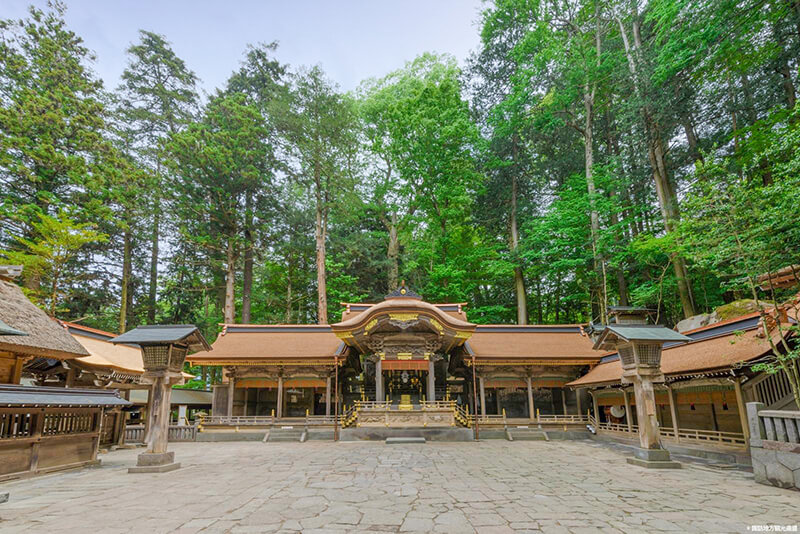
Records show that the Onbashira festival has been celebrated for over 1200 years. The Shinto shrine for which it is performed, Suwa Taisha, is one of the oldest Shinto shrines in Japan. Over 25,000 branches of this shrine can be found throughout the country. According to figures from 2014, that’s more than the number of Starbucks that there are in the entire world. These shrines house the Suwa Myoujin deity, protector of winds and waters, and exemplar of bravery and valor. Because of this, these shrines are often found in port towns or seaside areas.
The Suwa Taisha, or greater shrine, is composed of two lesser shrines: the Upper shrine (Kamisha) and Lower shrine (Shimosha). These smaller shrines each have two sites, for a total of four shrine sites within the Suwa Taisha greater shrine. While this is somewhat confusing, all you have to remember is that the Upper shrine and the Lower shrine celebrate Onbashira separately.
Schedule
The Onbashira festival is celebrated over several months. There are several sections of the festival, and each section is celebrated twice: once for the Upper shrine, and once for the Lower shrine.
Yamadashi is the first section of Onbashira, where the fir trees are removed from the mountain and brought into town. Participants must brave steep slopes, rivers and narrow streets in order to pull the new pillars to their resting place. Because the downhill sections of the course (called Kiotoshi) are so thrilling, this is the most popular time to view Onbashira.
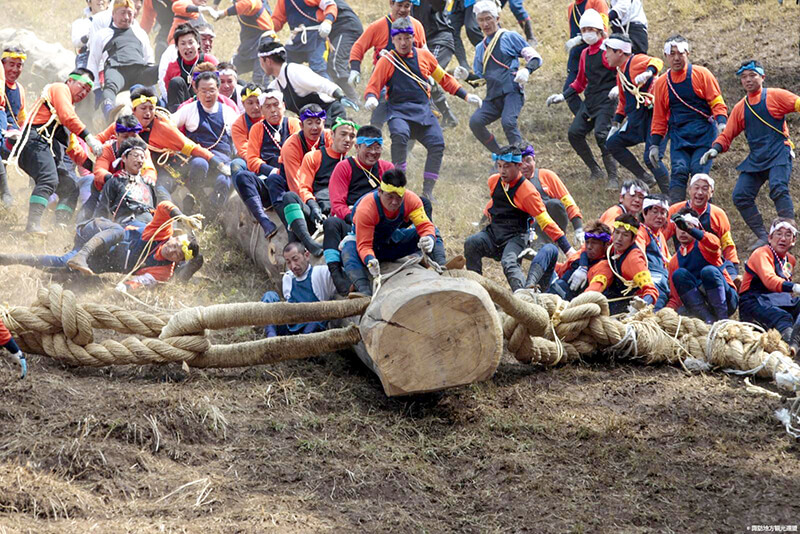
Satobiki is the second section of Onbashira, where the pillars are taken from their resting place and erected at each shrine. In addition to the tree-pullers and riders, parades of colorfully dressed celebrants join the ranks as they march to the shrine. The pillar is prepared for its new home and slowly lifted up into place as dozens of riders hold on tight.
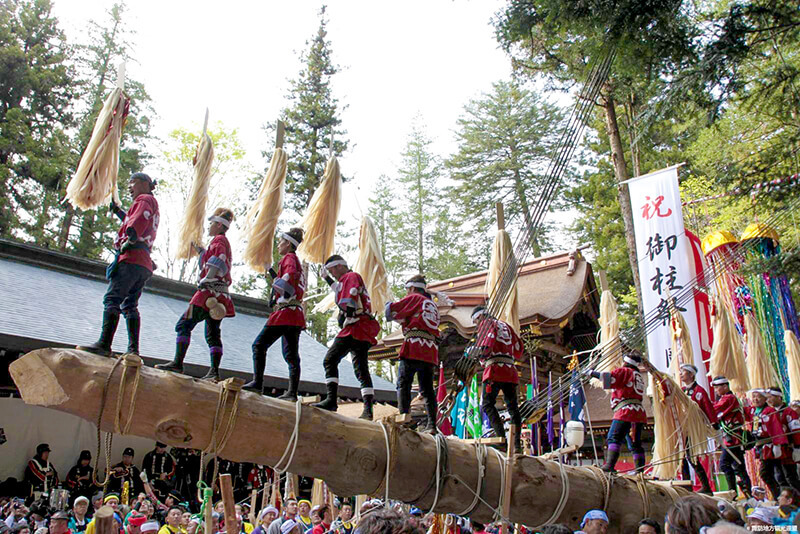
Below are the planned schedules for Onbashira 2016
Upper shrine (Kamisha)
・Yamadashi: April 2nd (Sat.), 3rd(Sun.)*, 4th (Mon.)*
・Satohiki: May 3rd (Tue.), 4th (Wed.), 5th (Thurs.)
Lower shrine (Shimosha)
・Yamadashi: April 8th (Fri.)*, 9th (Sat.)*, 10th (Sun.)*
・Satohiki: May 14th (Sat.), 15th (Sun.), 16th (Mon.)
The dates marked with a * are your best chances to see the downhill sections (Kiotoshi) of the festival. Viewing benchs will be arranged and require a sitting fee, but there should be places to stand and watch as well. See below for up-to-date information about the Onbashira festival’s schedule.
Access/Additional information
The Onbashira festival is held in the Suwa region in central Nagano. It can be reached from Nagano station by taking the JR Shinano train line to Shiojiri (approx. 1 hour), and then taking the JR Chuo line to your station of choice (see below). If you’re in Matsumoto, you can reach the Suwa area directly by JR Chuo line ( 30 min. for express, 60 min. for local). It can also be reached from Nagoya by taking the JR Chuo line to Shiojiri (approx. 2 hours) and then continuing on the same line to the Suwa area (requires a train change, but uses the same train line).
The closest station to the Upper shrine course is Chino station. The next station to the north is Kamisuwa station, where many Japanese ryokan are available.
The closest station to the Lower shrine course is Shimosuwa station, but may require taxi or bus service to reach the farther ends of it (particularly for the downhill section).
You can search for lodging using the unique-nagano search by area feature. Select Suwa and pick whatever lodging suits your needs the best: http://www.unique-nagano.com/area.php
Yamadashi Schedules
The schedule for the first two weekends has been posted on the official Onbashira website.
It shows the progress for each individual log over the course of the event, with timestamps for
important checkpoints.
First Weekend (April 2nd to April 4th, 2016)
Most people will be interested in the two events highlighted below:
Kiotoshi log-riding (#5) and Kawagoshi river-crossing (#6).
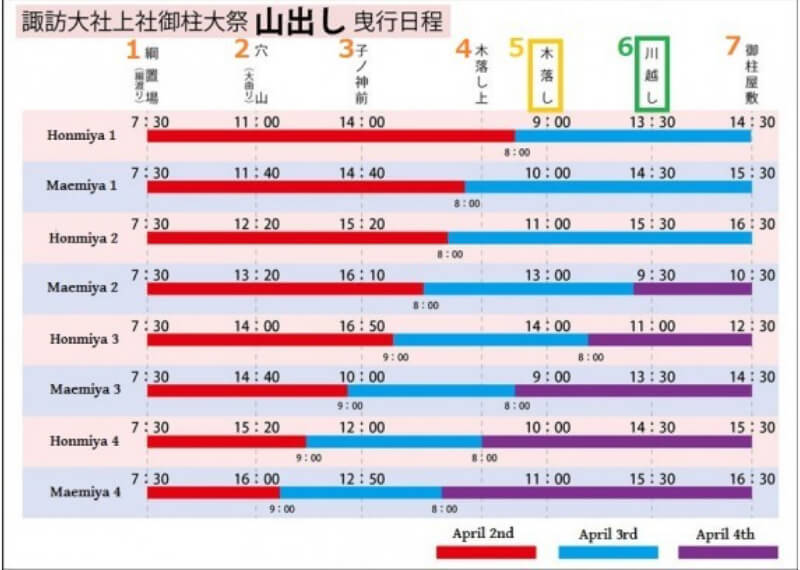
The Suwa Tourism Association strongly discourages people who do not have seating tickets
from viewing the Kiotoshi course. The crowds are large and there is always a possibility of injury,
so venture at your own risk. Tickets are not necessary to view the Kawagoshi course.
For exact locations of each checkpoint for the Kamisha’s Yamadashi event, see the links below
1. Tsuna Okiba (綱置場)
2. Anayama no Omagari (穴山の大曲)
3. Nenokami mae (子之神前)
4. Kiotoshi (木落とし)
5. Kiotoshi (木落とし)
6. Kawagoshi (川越し)
7. Onbashira Yashiki (御柱屋敷)
Second Weekend (April 8th to April 10th, 2016)
Most people will want to see the Kiotoshi section (#4) of the event. Please remember that viewing it without a ticket is strongly discouraged. There are two Kiotoshi times written for each log, the first for when it arrives at the hill and the second for when it rides down the hill.
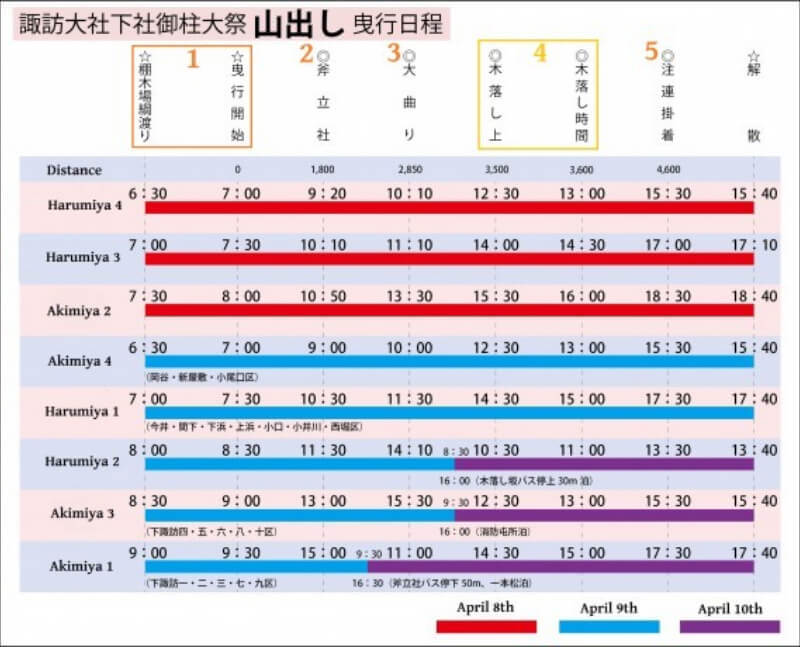
For exact locations of each checkpoint for the Shimosha’s Yamadashi event, see the links below:
1. Starting point
2. Yokitatesha shrine (no coordinates)
3. Omagari
4. Kiotoshi area
5. Ending point
Satobiki Schedules
The schedules for the Satobiki portions of the festival are now available! No tickets are required to see this part of Onbashirasai, so feel free to stop on by and take in the atmosphere. Don’t miss Tate-Onbashira, where you can see the pillars being raised in place at each shrine!
Upper Shrine (Tuesday, May 3rd to Thursday, May 5th)
The Upper Shrine’s pillars begin from the Onbashira Yashiki, approximately 25 minutes away from Chino station on foot. The pillars will slowly make their way up to the Maemiya and Honmiya shrines. You can see Tate-Onbashira at Maemiya on the second day and at Honmiya on the third day. Expect the action to begin around 11:00 am, but get there extra early for a good view!
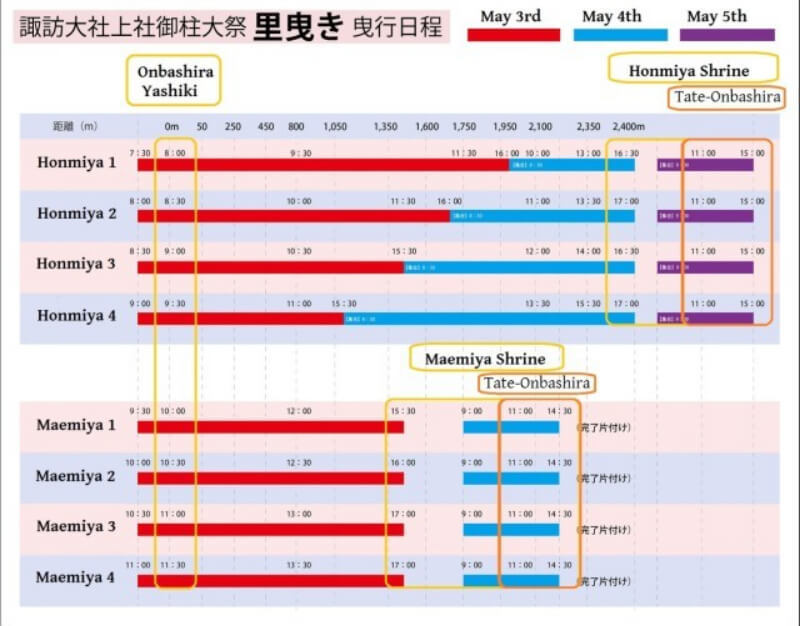
Lower Shrine (Saturday, May 14th to Monday, May 16th)
All of the pillars begin from Shimekake, an area about 40 to 50 minutes uphill from Shimo Suwa station. The pillars then slowly make their way down to their respective shrines, Harumiya and Akimiya. Events of the first day are highlighted in red, the second day in blue and the third day in yellow. All of Akimiya’s pillars will be raised at once on the third day, but Harumiya’s pillars will be raised on at a time over the course of the event.
Don’t worry too much about the various locations listed for the Akimiya shrine’s pillars, because they will be moving through town between Harumiya and Akimiya and should be very easy to find. Just look for the incredibly noisy and colorful parades.
